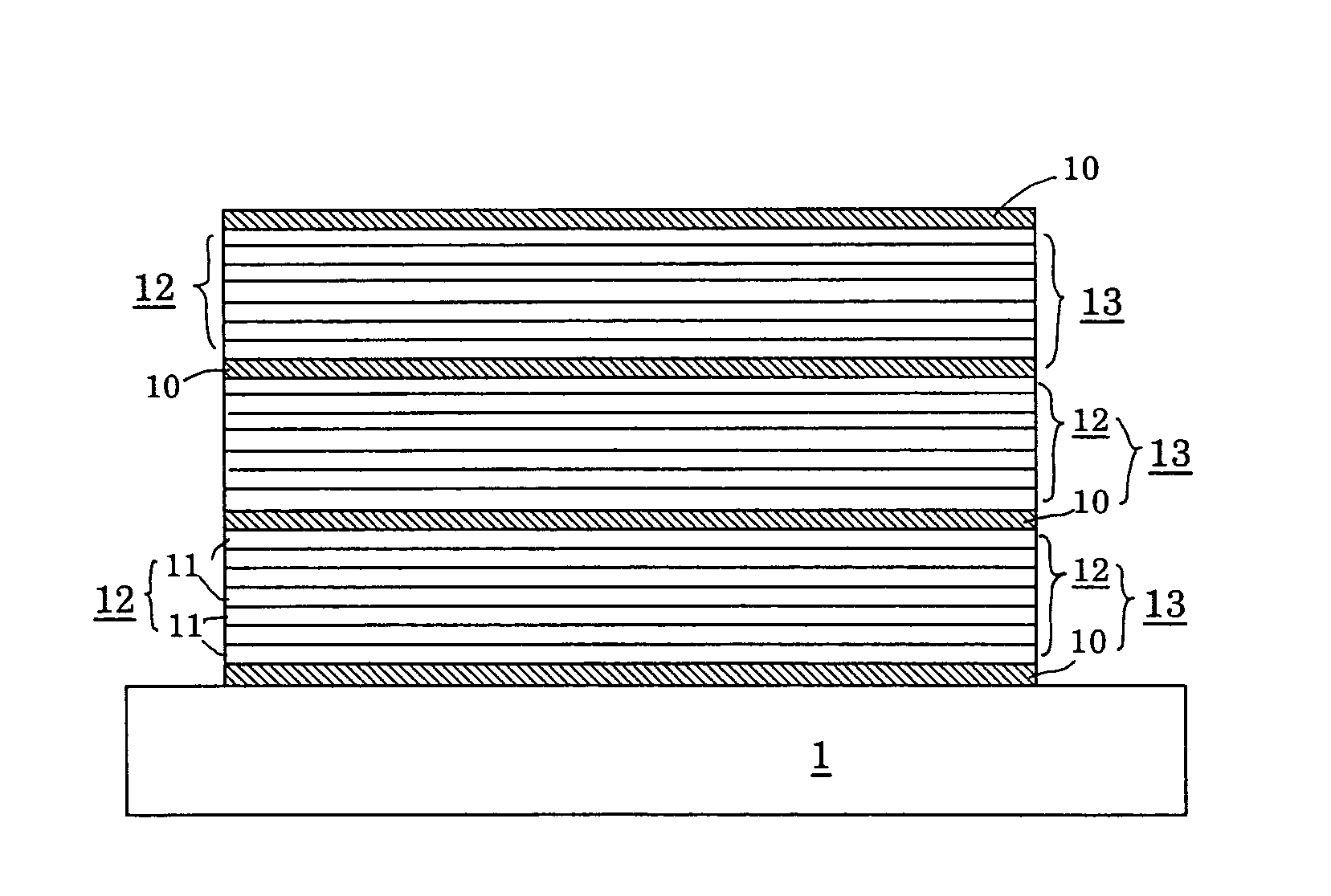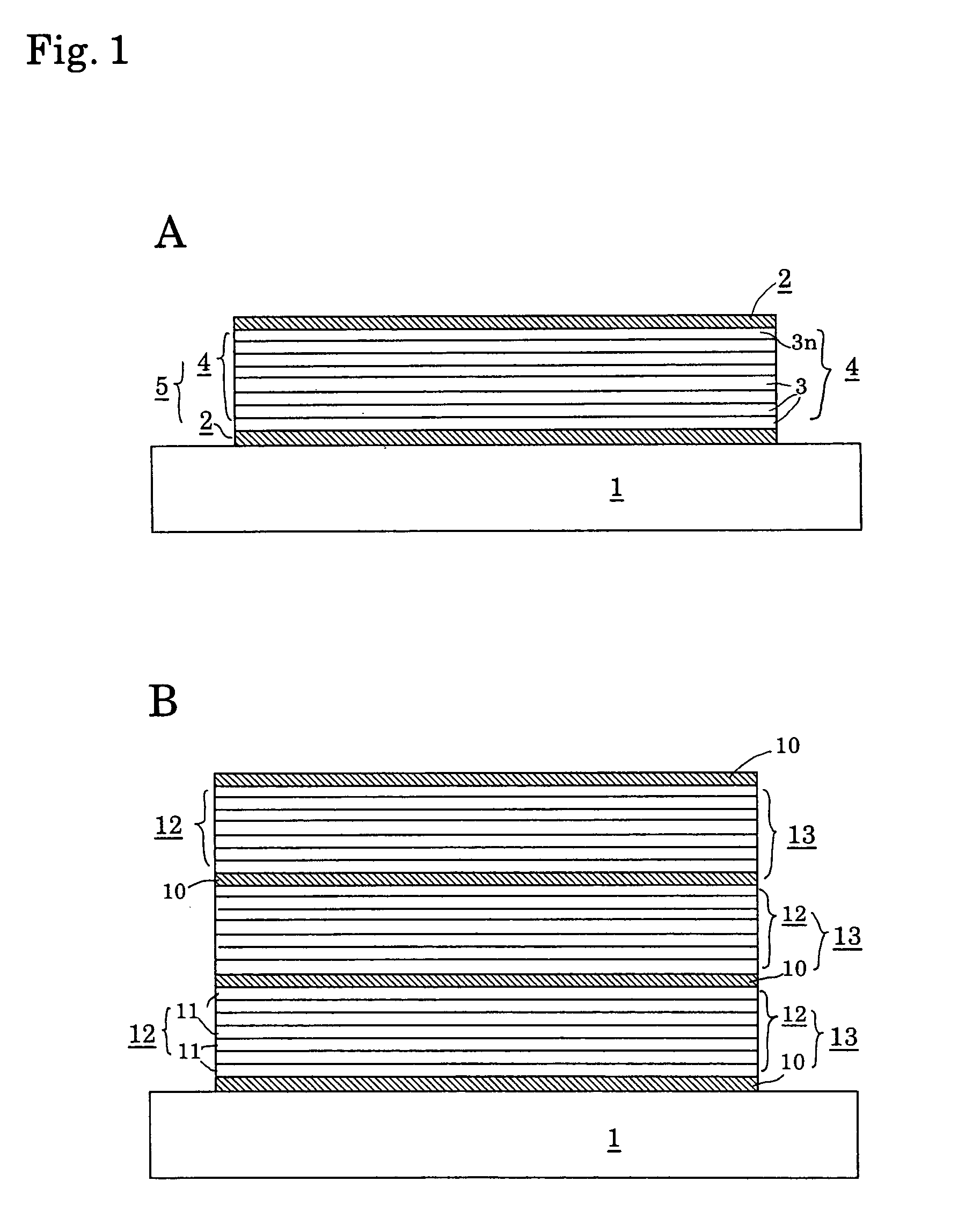Anisotropic thin-film rare-earth permanent magnet
- Summary
- Abstract
- Description
- Claims
- Application Information
AI Technical Summary
Benefits of technology
Problems solved by technology
Method used
Image
Examples
example 1
[0040]The Nd and Fe ingot shown in Table 1 was used as the starting material. A 200 mm silicon wafer for commercial integrated circuits (product that corresponded to the standards of the Japan Electronic Industry Development Association (JAIDA)) was used as the single-crystal Si wafer (substrate material), and a sputtering apparatus was used to perform sputtering and to alternately layer monoatomic Nd layers and atomic layered units obtained by layering a plurality of monoatomic Fe layers, yielding thin-film rare-earth permanent magnets in which a monoatomic Nd layer was the uppermost layer.
[0041]Table 2 lists the film thicknesses and number of layers in the resulting thin-film rare-earth permanent magnets. Some of the layered films thus obtained were heat-treated in a vacuum at the temperatures shown in Table 2, and the magnetic characteristics thereof were measured by a vibrating sample magnetometer The results are shown in Table 2.
PUM
| Property | Measurement | Unit |
|---|---|---|
| Magnetic field | aaaaa | aaaaa |
| Length | aaaaa | aaaaa |
| Auxiliary magnetic field | aaaaa | aaaaa |
Abstract
Description
Claims
Application Information
 Login to View More
Login to View More - R&D
- Intellectual Property
- Life Sciences
- Materials
- Tech Scout
- Unparalleled Data Quality
- Higher Quality Content
- 60% Fewer Hallucinations
Browse by: Latest US Patents, China's latest patents, Technical Efficacy Thesaurus, Application Domain, Technology Topic, Popular Technical Reports.
© 2025 PatSnap. All rights reserved.Legal|Privacy policy|Modern Slavery Act Transparency Statement|Sitemap|About US| Contact US: help@patsnap.com


